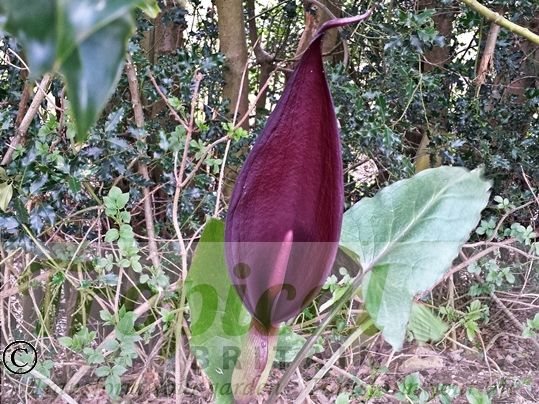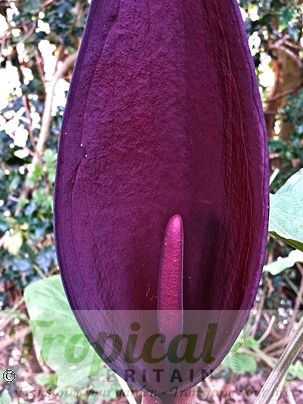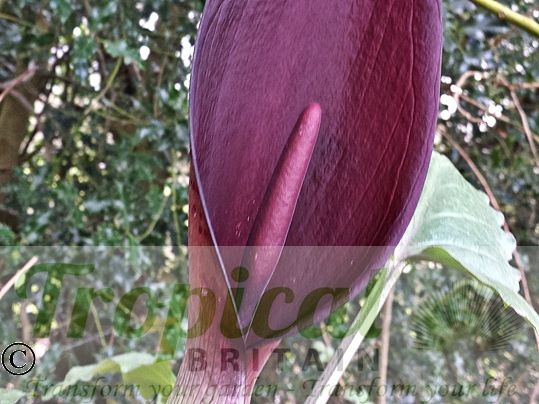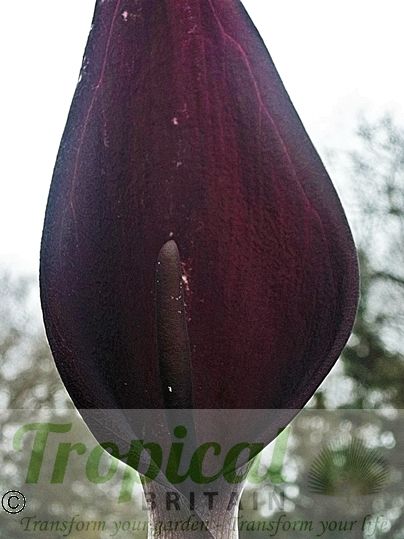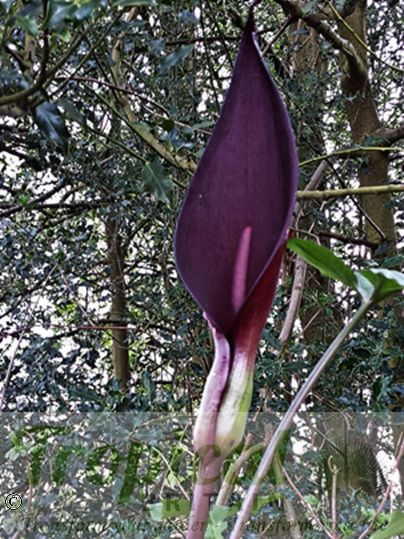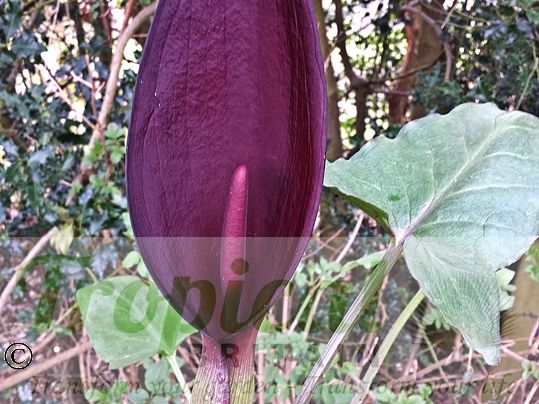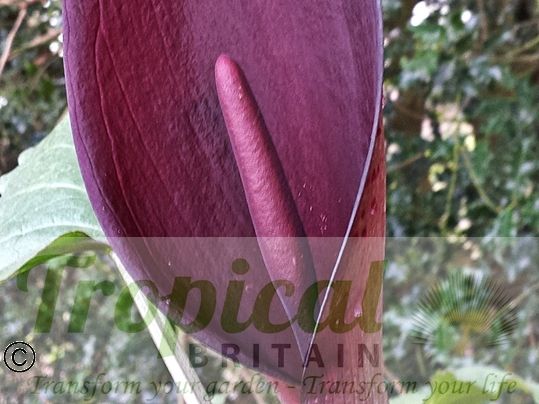Arum purpureospathum
Arum purpureospathum, has the largest flower of the Arum genus yet was only discovered as recently as April 1984 when BSBI member Vaughn Fleming photographed a specimen from Agia Roumei in southwest Crete. The following year, Peter Boyce, while working at RBG Kew, set out to Crete to see if he could find this apparently unknown species and found it growing in fragmented locations over a relatively small geographic area. He described the species in 1987.
Arum purpureospathum has a large dark purple spathe and dark purple spadix held on an extremely tall peduncle. Its foliage emerges in autumn and the extraordinary inflorescence appears in mid to late winter, usually in February in the UK, although it can be as early as January or as late as March. It has a strong fetid odour with musky sweet undertones. A monoecious species, it readily sets fruit which ripens to a bright orange colour.
In the wild, Arum purpureospathum is limited to five separate locations and is listed as Vulnerable on the IUCN Red List.
At Tropical Britain, Arum purpureospathum is part of our ex situ conservation programme and only a limited number of plants - either raised from our own seed or from division of tubers - are released for sale.
Additional Information
| Order | Alismatales |
|---|---|
| Family | Araceae |
| Sub-Family | Aroideae |
| Geographical Origin | Greece: Crete |
| Cultivation | Prefers sun or dappled shade. A moist but well drained alkaline soil. Tubers are dormant in summer and should be kept dry until autumn |
| Eventual Height | Inflorescence to 75 cm |
| Eventual Spread | 50 cm |
| Hardiness | Hardy in most UK locations if given a well-drained substrate. Benefits from a winter mulch of bark |

Free DELIVERY
ON ALL ORDERS OVER £99THIS OFFER IS VALID ON ALL OUR STORE ITEMS.

